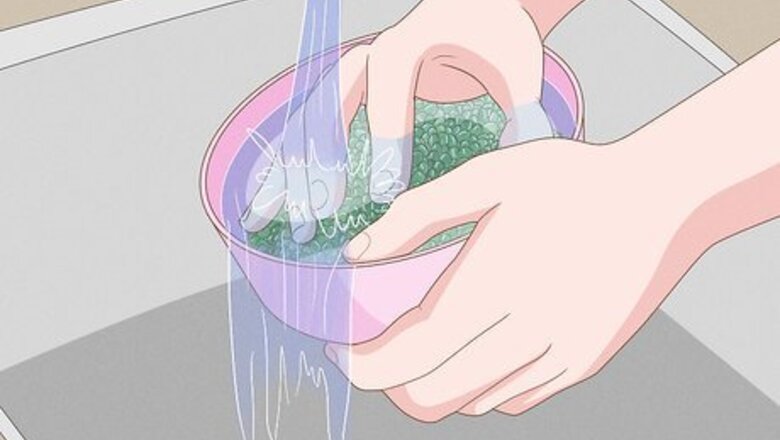
views
- Rinse your green grams in a colander then soak them in distilled water for 7 to 8 hours.
- Then, strain the water and put the beans in a container with a lid. Place it somewhere warm, leave it for 7-8 hours, then rinse off the sprouted beans.
- Or, place the washed and soaked beans in a damp muslin or cotton cloth. Let the excess water drain then place the cloth in a container overnight.
Sprouting Green Gram With a Container

Wash the beans thoroughly. Begin by pouring out the volume of green gram you want into a fine colander or sieve. You need to wash the beans thoroughly before you try to sprout them. Rinse them in water three or four times to make sure that they are completely clean. If you are making a sprouted green gram salad, you should use about 1 cup of green gram per person. So if you are making a salad to serve two, sprout 2 cups of the beans. You will be able to buy the beans from local grocery and health food stores.

Soak the beans in distilled water. Once you have thoroughly washed the beans you need to place them into a bowl and cover them with water. The water should completely cover the beans, with the beans about an inch below the surface of the water. Do not use tap water for this. Soak the beans in water that has been boiled and then cooled to ensure it contains no contaminants. Leave the beans to soak for at least seven or eight hours. You might want to leave them overnight. After you have soaked the beans, put them in a sieve or colander and rinse them thoroughly until the water runs clear.
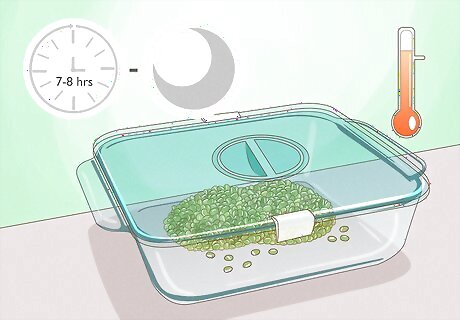
Place the beans in a container with a lid. Transfer your beans to a clean and dry container that you can close. After putting the beans in, close the lid and place the container somewhere warm. Leave them again for seven or eight hours, or overnight. After a day check them to see if they have sprouted. If you leave them overnight you will most likely find the beans sprouting in the morning. If the beans haven't sprouted after a day, rinse them and drain them before returning them to the container. Most mung beans will sprout within 24 hours. If it takes longer than two days for the beans to sprout, then don't eat them raw. Cook before using.
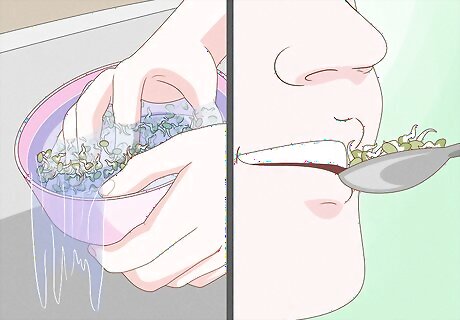
Rinse them before consumption. Once your green gram has sprouted nicely they are ready to eat in whatever way you like. Be sure you rinse them thoroughly again before you eat them, especially if you are having them raw in a salad. Green gram is often used in Indian cuisine as a base for dal, curry, and salads. You can also make a delicious Haleem stew with mutton and green gram. In Filipino cuisine, green gram is eaten with sautéed meat, garlic, onions and bay leaves. In Indonesia, green gram is made into a dessert by cooking the beans with sugar, coconut milk, and ginger.
Wrapping Green Gram in a Cloth
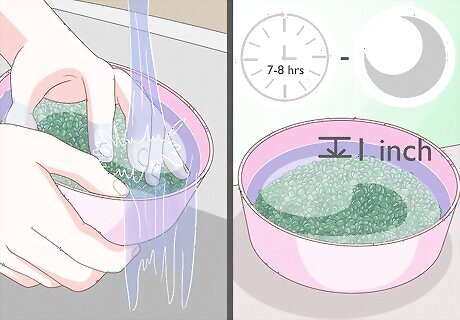
Wash and soak the beans. Thoroughly wash the beans, rinse them, and transfer them to a large bowl. Cover them in distilled water (again, do not use tap water), ensuring that they are fully submerged and there is about an inch of water between the beans and the surface of the water. Leave them to soak for seven or eight hours, or overnight. Rinse the beans after the soak in a sieve or fine colander, making sure that the water runs clear when you are finished. Put the beans to one side while you prepare the next step.
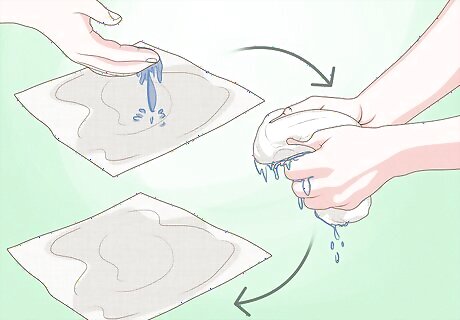
Dampen a clean muslin or cotton cloth. Instead of using a container to sprout the green gram in, this method requires you to wrap the beans in a dampened cloth. Begin by stretching the cloth on a flat surface and splashing it with a little water. You don't want the cloth to be sodden, so squeeze out any excess water. If you do not have a muslin cloth, a cheesecloth or thin cotton cloth will also work.
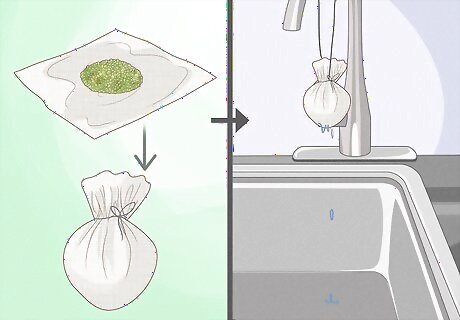
Put the green gram on the cloth. Place the cloth over a bowl so you can transfer the beans to the cloth without any rolling away from you. Scoop the beans onto cloth over the bowl and then tie the top of the cloth so that the beans are contained in a bundle. Allow the bundle to hang over the bowl or sink so that any excess water can drip off.
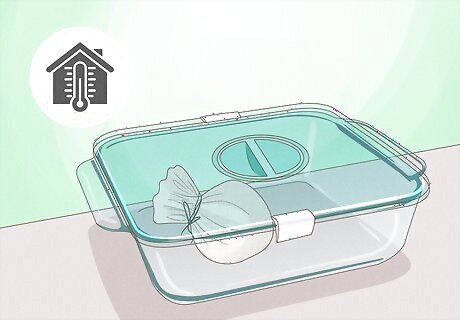
Store the beans overnight. Once any excess water has drained off, take the bundle and place it in a clean and dry container. The cloth should still be a little damp, but there should not be any standing water in the container. If you leave the green gram to sit in standing water they will most likely go bad. Cover the container with a lid and leave the green gram somewhere at room temperature overnight to sprout. Check the cloth in the morning and sprinkle some more water on it if it has dried out.

Check for sprouts. When the green gram has developed short shoots, it is ready to eat. Drain the beans completely and rinse them one more time before you eat them. You can eat green gram raw, steamed or microwaved, in a salad, stew or on its own.Once germinated, the sprouts can be preserved in a container in the refrigerator for three or four days. If you want longer sprouts you can return them to a cloth or container and leave them for a few more hours.




















Comments
0 comment